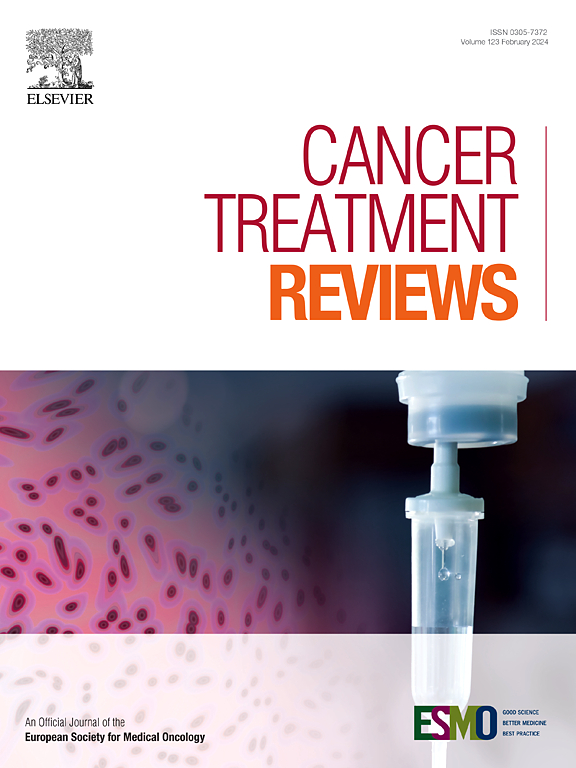Exercise in patients with metastatic prostate cancer: A comprehensive review
IF 9.6
1区 医学
Q1 ONCOLOGY
引用次数: 0
Abstract
Prostate cancer (PC) is one of the most prevalent malignancies worldwide. Metastatic PC remains an incurable disease, with the androgen receptor (AR) pathway being the primary driver of tumor progression and the main target for therapeutic strategies. Thus, patients usually undergo long-term treatments, particularly androgen deprivation therapy (ADT), which can worsen the intrinsic deterioration in quality of life (QoL) caused by the disease burden. Increasing evidence supports the use of physical activity (PA) and structured exercise (EX) as complementary measures to mitigate treatment-related adverse effects and improve clinical outcomes across tumor types. EX has shown benefits across multiple systems and plays a significant role in modulating tumor progression through several cellular pathways. Furthermore, it has confirmed potential to alleviate cancer-related symptoms while enhancing functional capacity and tolerability of treatment. This review gathers the current evidence regarding the impact of PA and EX on patients with metastatic PC, integrating both epidemiological and interventional studies. Despite promising findings, most of the available evidence is documented on non-metastatic populations, highlighting the need for directed studies in advanced disease settings. Future research is needed in metastatic PC patients, in order to assess long-term impacts of EX in this population.
运动对转移性前列腺癌患者的影响:一项综合综述
前列腺癌是世界上最常见的恶性肿瘤之一。转移性前列腺癌仍然是一种无法治愈的疾病,雄激素受体(AR)途径是肿瘤进展的主要驱动因素,也是治疗策略的主要目标。因此,患者通常接受长期治疗,特别是雄激素剥夺治疗(ADT),这可能加剧疾病负担引起的生活质量(QoL)的内在恶化。越来越多的证据支持使用身体活动(PA)和结构化运动(EX)作为辅助措施,以减轻治疗相关的不良反应并改善各种肿瘤类型的临床结果。EX在多个系统中显示出益处,并通过几种细胞途径在调节肿瘤进展中发挥重要作用。此外,它已证实有可能减轻癌症相关症状,同时增强功能能力和治疗耐受性。本综述收集了目前关于PA和EX对转移性PC患者影响的证据,整合了流行病学和介入性研究。尽管有令人鼓舞的发现,但大多数现有证据都是在非转移性人群中记录的,这突出了在晚期疾病环境中进行定向研究的必要性。为了评估EX对这一人群的长期影响,需要对转移性PC患者进行进一步的研究。
本文章由计算机程序翻译,如有差异,请以英文原文为准。
求助全文
约1分钟内获得全文
求助全文
来源期刊

Cancer treatment reviews
医学-肿瘤学
CiteScore
21.40
自引率
0.80%
发文量
109
审稿时长
13 days
期刊介绍:
Cancer Treatment Reviews
Journal Overview:
International journal focused on developments in cancer treatment research
Publishes state-of-the-art, authoritative reviews to keep clinicians and researchers informed
Regular Sections in Each Issue:
Comments on Controversy
Tumor Reviews
Anti-tumor Treatments
New Drugs
Complications of Treatment
General and Supportive Care
Laboratory/Clinic Interface
Submission and Editorial System:
Online submission and editorial system for Cancer Treatment Reviews
 求助内容:
求助内容: 应助结果提醒方式:
应助结果提醒方式:


